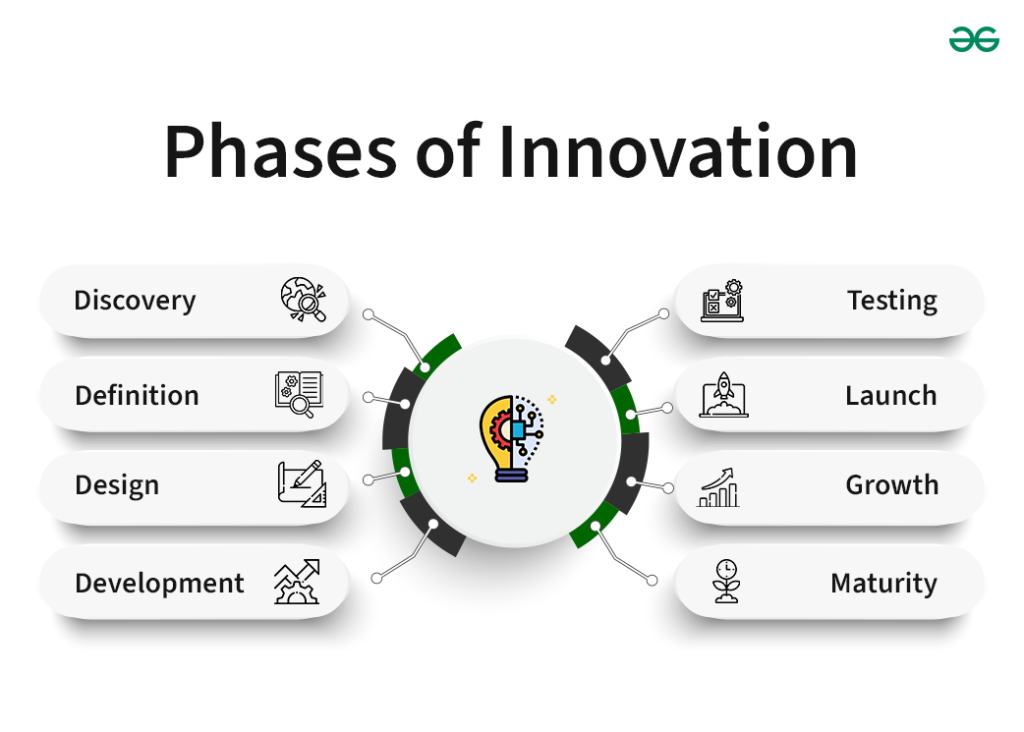To explain technological innovation in layman’s terms, it is an innovation that improves on known methods, processes, or procedures. This also could be done in an innovative manner without changing any aspect of how things are done. Some examples of technological innovations include cell phones, computers, microwaves, televisions, and the list goes on. These innovations make our lives easier by providing us with more ways to do things, however, it is still important to define exactly what technological innovations are, and how they can impact you.
There are three broad types of technological innovations.
These are information, machine, and physical/mechanical innovations. Each of these broad types of technological innovation has different effects on society. Let’s look at each one more in detail.

Information technological innovations
Information technological innovations refer to anything that adds to the existing body of knowledge or idea. This might include new ways to perform certain tasks, new ways to process data, or it could be something as simple as printing a new book or magazine. The most common examples of information innovations include the telephone, radio, television, and the internet. In the early 19th century, a few new ideas, like printing a book, were able to change the way people lived their lives. However, the telephone created a domino effect that affected all aspects of daily life. This type of innovation was later known as technological progress.
Machine learning
Machine learning refers to the use of technological innovations for building machines that can do things that humans cannot. Some examples include the electric hand dryer, the automated sewing machine, and the computerized calculator. Machine learning has changed virtually every aspect of manufacturing and commercial activity. Examples include how factories have been built more efficiently, how workers are treated, and even how products are priced.
Physical/mechanical technological innovations
Physical/mechanical technological innovations refer to changes that take place when something is stored electronically in the australian data room or when data is moved from one location to another. Examples include the flash drive, the hard drive, and the digital camera. These physical devices make the transportation of data much faster and easier. They also allow people to store more information, allowing them to work on projects more efficiently. Data movement has revolutionized how businesses operate, how they store data, and what they do to ensure the security of their data. Flash drives, for example, have allowed business owners to easily access customer lists and other important information.
A key factor in determining which type of technological innovation you should pursue is what your learning objectives are. Learning objectives can be divided into two basic categories: professional and nonprofessional. Professional learning objectives typically involve product development, market research, new product designs, and the testing of new processes and procedures. Nonprofessional learning objectives often deal with safety, productivity, accessibility, usability, and connectivity. Although the types of learning objectives vary from industry to industry, all training programs should support the development of a clear understanding of the learning objectives needed to meet each organization’s unique set of challenges.
The key to the success of any technological change lies in the implementation of the changes.
Often, new technologies are best implemented by first designing a training curriculum that builds on the existing educational framework. Once the curriculum is developed, and the training sessions have been delivered, the continuous improvement processes required to maintain the success of the manufacturing process occur naturally.
When considering technological innovations, it is important to remember that the world around us has changed dramatically over the course of the last century. The pace at which technology takes hold in our day-to-day lives is surprising and oftentimes, uncomfortable. However, constant vigilance and adjustment to improve productivity, efficiency, and quality are necessary for ensuring the long-term success of any technological change. Accordingly, we must commit to keeping in touch with the times to determine how our technological systems currently operate and how any upcoming changes could negatively impact our day-to-day operations. By doing so, we can develop methods for addressing emerging issues as they arise and continue to enjoy the benefits of having modern systems that meet day-to-day needs and exceed the goals that were set during the developmental process.